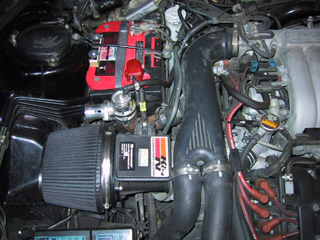 K&N Filter Induction Performance Kit
(FIPK) for less restrictive air intake. Side effects included more engine noise
(you can clearly hear the turbos spool up and the bypass valve actuate) and an
annoying intake resonance (commonly described as a "hooting owl") that I fixed by
installing an aftermarket blow-off valve (see below). This modification was probably
good for a few horsepower once the boost controller was installed and the engine began
inhaling more air, but I did not think to verify this on the dyno.
K&N Filter Induction Performance Kit
(FIPK) for less restrictive air intake. Side effects included more engine noise
(you can clearly hear the turbos spool up and the bypass valve actuate) and an
annoying intake resonance (commonly described as a "hooting owl") that I fixed by
installing an aftermarket blow-off valve (see below). This modification was probably
good for a few horsepower once the boost controller was installed and the engine began
inhaling more air, but I did not think to verify this on the dyno.
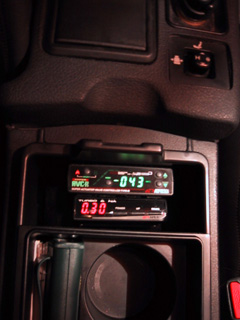 The BADC setting provides the unit with an estimate of solonoid activity
necessary to achieve the desired boost limit. If it is set too low, the unit
may never achieve the desired boost pressure, regardless of how long it tries
to learn. If it is set too high, the desired boost pressure will be exceeded
temporarily, and again the unit will have difficulty learning. This is puzzling
to me, as the algorithm should be straightforward:
The BADC setting provides the unit with an estimate of solonoid activity
necessary to achieve the desired boost limit. If it is set too low, the unit
may never achieve the desired boost pressure, regardless of how long it tries
to learn. If it is set too high, the desired boost pressure will be exceeded
temporarily, and again the unit will have difficulty learning. This is puzzling
to me, as the algorithm should be straightforward:
check pressure if below threshold then close wastegates if above threshold then open wastegates repeat
Another annoyance is that this unit does not work at high altitudes. When driving in the Alps, the unit shuts itself off above 5-6k feet, limiting boost to about .5 bar. A'PEXi customer support has verified this behavior but offers no solution. Now that I live in the UK, this flaw is not a concern, but replacement will be necessary if I move back to higher ground.
If you're in the market for a boost controller, the latest offerings from A'PEXi and Blitz are much more flexible, but with capability comes complexity and some might find them a bit harder to set up properly. At any rate, a boost controller represents the absolute best bang for the buck investment, but if you're not careful, BANG is exactly what your engine will do!
Note that it is tricky to wire a turbo-timer without disabling convenience functions such as passive alarm activation, keyless entry, automatic headlight shutoff, power antenna retraction, etc. Eric Gross offers some good tips on his Turbo Timer Installation web page for those interested in this modification.
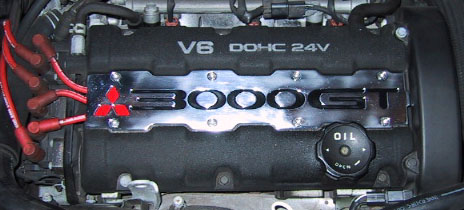 Magnecore wires for
better spark. I had these installed with the first major service at
50k miles. They didn't make any difference as far as I can tell, but perhaps
they would have allowed a spark plug gap wider than .034.
Magnecore wires for
better spark. I had these installed with the first major service at
50k miles. They didn't make any difference as far as I can tell, but perhaps
they would have allowed a spark plug gap wider than .034.
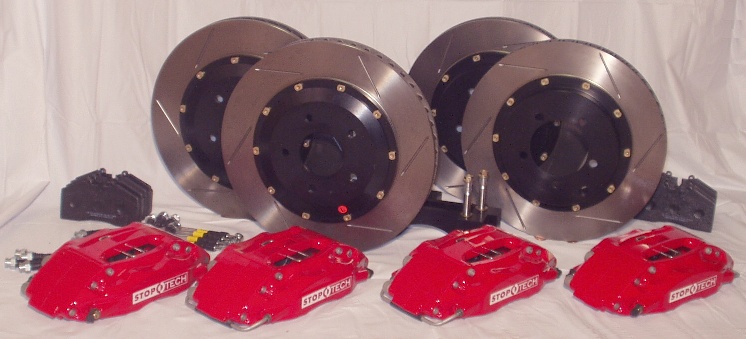
Here are a few pictures comparing the rotors and pads with stock 2nd gen. Here are a few installation notes. Based on my experience with this kit, here are a few issues to consider when deciding about brake upgrades.
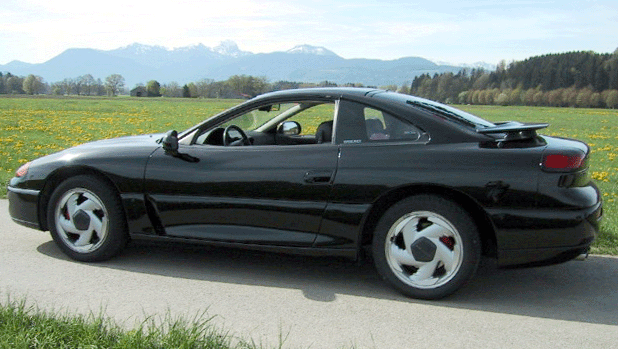
For those preparing to accept the wheel fitment challenge, avoid frustration by reviewing Greg Wurst's stock wheel fitment guide and the 3SI Wheels gallery.



The stock cat-back system flows nearly as well as aftermarket systems, and the selectable exhaust valving becomes increasingly important for volume control as restrictions upstream are eliminated. Still, stainless steel exhaust systems sound good and save weight, so I may pursue it eventually. The Borla system is relatively cheap and sounds fantastic outside the car but has an unacceptably annoying resonance in the cockpit between 2k and 3k RPMs where the car is driven most often. Borla customer service provides inserts to address the irritating drone (while restricting flow!), but owners report that they are ineffective. The HKS exhaust is a similar design and has no resonance but reportedly suffers from fitment problems. The Greddy system is more expensive and higher quality, flowing just as well (some say better), great sound, no resonance, but exits on only one side of the car (aesthetically not as pleasing). Another option would be to design a custom exhaust system, which would have the added benefit of maintaining the stock appearance, with dual tips on both sides rather than the ridiculous coffee cans that come with most systems. Someone else on the INTERNET Stealth/3000GT group made a similar modification; compare my stock exhaust sound (29k) to the modified exhaust sound (27k).
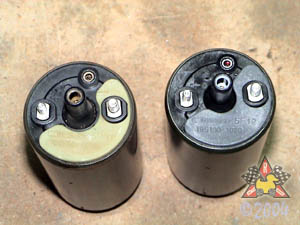
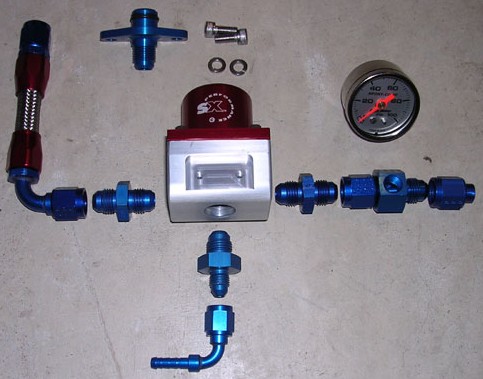
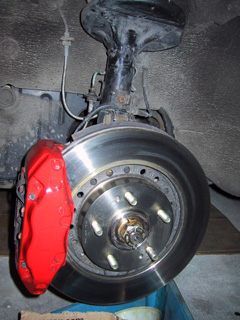
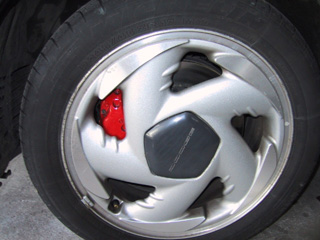 Custom stainless steel braided brake lines for safety and
to eliminate brake sponginess. These were custom made for Mikael
in Sweden, Roger in Switzerland, and I in Germany. I couldn't feel
much of a difference on the street after installation but am confident
they help maintain the firm pedal feel I enjoy at the track despite elevated
brake fluid temperatures. Also, there is very little chance of failure
with lines like this.
Custom stainless steel braided brake lines for safety and
to eliminate brake sponginess. These were custom made for Mikael
in Sweden, Roger in Switzerland, and I in Germany. I couldn't feel
much of a difference on the street after installation but am confident
they help maintain the firm pedal feel I enjoy at the track despite elevated
brake fluid temperatures. Also, there is very little chance of failure
with lines like this.